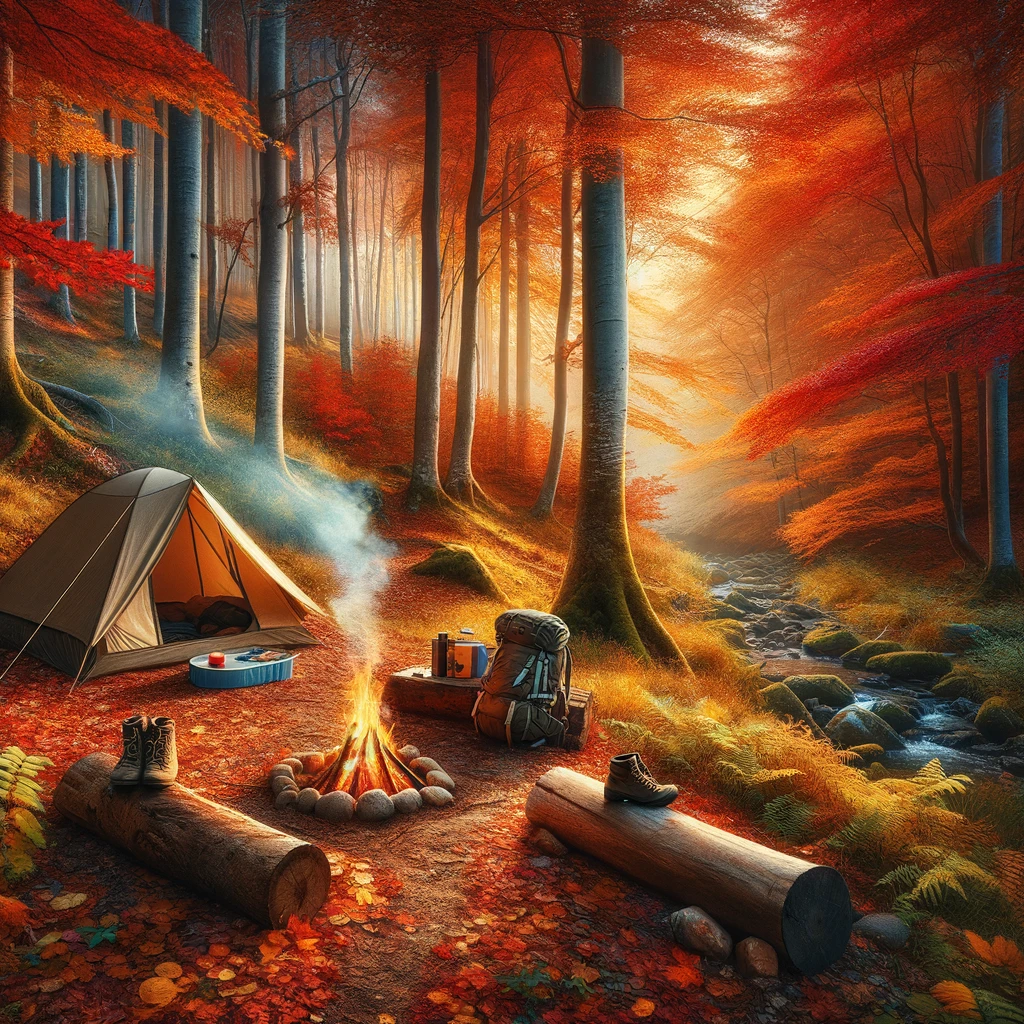Dispersed camping, the practice of camping outside designated campgrounds on public lands, offers a unique and immersive outdoor experience. However, to truly master this form of adventure, one must understand and adapt to the ever-changing seasons. This comprehensive guide will walk you through the essential considerations for dispersed camping throughout the year, ensuring you’re prepared for whatever Mother Nature throws your way.
General Year-Round Considerations
Before delving into seasonal specifics, it’s crucial to understand the fundamental principles that apply to dispersed camping year-round. Adhering to Leave No Trace principles is paramount, ensuring that we preserve the natural beauty of our wilderness areas for future generations. Always research local regulations and obtain any necessary permits before your trip. Additionally, emergency preparedness should be a top priority regardless of the season.
For those new to dispersed camping or venturing solo, it’s essential to familiarize yourself with safety tips for solo dispersed camping. These guidelines will help you stay safe and confident during your adventures.
Spring Dispersed Camping
As nature awakens from its winter slumber, spring offers dispersed campers a unique set of challenges and opportunities.
Dealing with Muddy Conditions
Spring thaws can turn trails and campsites into muddy quagmires. To minimize impact and ensure a comfortable experience:
- Choose elevated campsites with good drainage.
- Use established trails to avoid creating new paths and damaging vegetation.
- Bring extra waterproof footwear and gaiters.
Wildlife Awareness
Spring is a time of increased wildlife activity, particularly during mating seasons. Stay alert and:
- Store food properly to avoid attracting animals to your campsite.
- Make noise while hiking to avoid surprising wildlife.
- Learn to identify signs of animal activity in your area.
Unpredictable Weather
Spring weather can be notoriously fickle. Prepare for rapid changes by:
- Packing versatile, layered clothing.
- Bringing both rain gear and sun protection.
- Checking weather forecasts regularly and being ready to adjust plans.
Summer Dispersed Camping
Summer brings warmer temperatures and longer days, perfect for extended adventures. However, it also presents unique challenges.
Managing Heat and Sun Exposure
Protect yourself from the summer sun by:
- Camping in shaded areas when possible.
- Using high-SPF sunscreen and wearing protective clothing.
- Planning strenuous activities for cooler morning or evening hours.
Fire Safety
Dry summer conditions increase the risk of wildfires. Practice responsible fire management by:
- Checking local fire restrictions before your trip.
- Using established fire rings or portable fire pits.
- Fully extinguishing fires and never leaving them unattended.
Avoiding Peak Crowds
Summer is the busiest season for outdoor recreation. To find solitude:
- Explore less popular areas.
- Plan trips for weekdays when possible.
- Venture further from trailheads and roads.
Fall Dispersed Camping
Fall offers spectacular scenery and comfortable temperatures but requires some special considerations.
Navigating Hunting Seasons
Many public lands allow hunting in the fall. Stay safe by:
- Wearing bright, visible colors.
- Making noise to alert hunters to your presence.
- Researching local hunting seasons and regulations.
Preparing for Changing Weather
Fall weather can change rapidly. Be ready by:
- Packing extra warm layers.
- Bringing waterproof gear for unexpected rain or snow.
- Setting up camp with wind protection in mind.
Enjoying Fall Foliage Responsibly
While admiring autumn colors, remember to:
- Stick to established trails to avoid damaging fragile vegetation.
- Practice “leave no trace” principles, including not collecting leaves or plants.
- Be prepared for popular areas to be busier during peak foliage times.
Winter Dispersed Camping
Winter camping offers solitude and breathtaking scenery but requires careful preparation and specialized skills.
Cold Weather Gear Essentials
Invest in quality cold-weather gear, including:
- A four-season tent and winter-rated sleeping bag.
- An insulated sleeping pad to protect from ground cold.
- A layered clothing system with moisture-wicking base layers.
Snow Camping Techniques
Master essential snow camping skills such as:
- Building snow shelters or reinforcing your tent with snow walls.
- Using snowshoes or skis for transportation.
- Melting snow for water and keeping it from freezing.
Winter Navigation and Safety
Winter conditions can make navigation challenging. Prepare by:
- Learning to use a map and compass in snowy conditions.
- Carrying an avalanche beacon, probe, and shovel in avalanche-prone areas.
- Understanding how to recognize and avoid hypothermia and frostbite.
Seasonal Gear Adjustments
As the seasons change, so should your gear. Adapt your equipment by:
- Switching between 3-season and 4-season tents as needed.
- Adjusting your sleeping bag rating to match expected temperatures.
- Modifying your clothing layering system for each season.
Water Management Across Seasons
Water availability and management vary significantly throughout the year:
- Spring: Be cautious of high water levels and use water filters to remove sediment from snowmelt.
- Summer: Locate water sources in advance and carry extra water in dry areas.
- Fall: Prepare for freezing nights by insulating water containers.
- Winter: Learn techniques for melting snow efficiently and keeping water from freezing.
Conclusion
Mastering dispersed camping across all seasons requires knowledge, preparation, and adaptability. By understanding the unique challenges and opportunities each season presents, you can ensure a safe, enjoyable, and responsible outdoor experience year-round.
Remember, the key to successful dispersed camping lies in thorough planning and a willingness to adapt to changing conditions. As you gain experience, you’ll develop the skills to overcome common challenges in dispersed camping, making each trip more rewarding than the last.

Leave a Reply